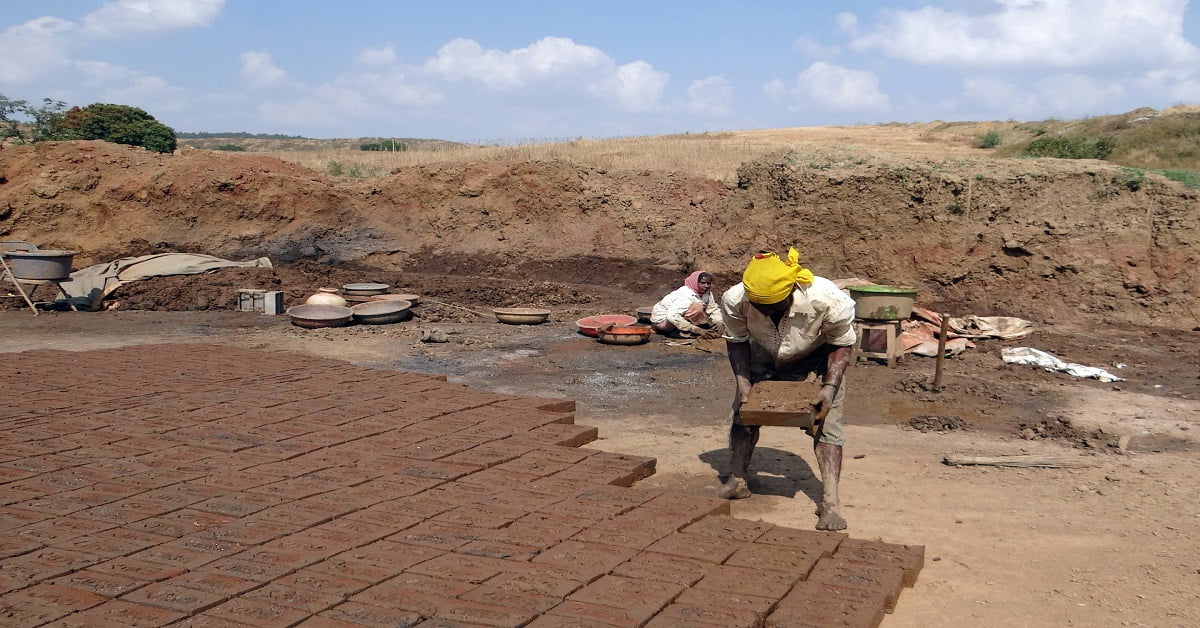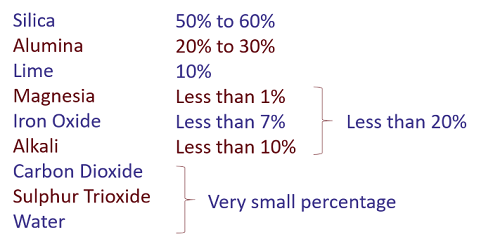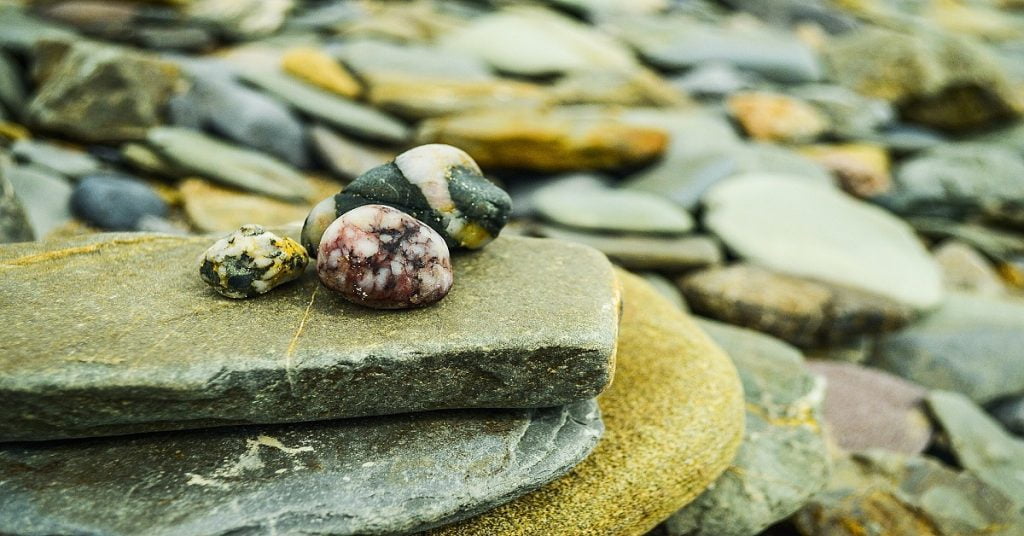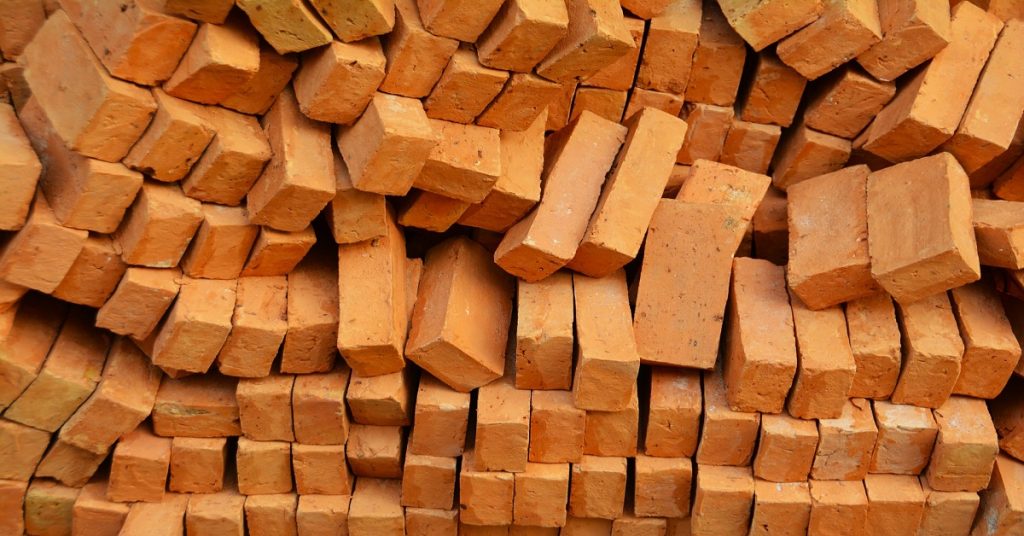Composition of Good Brick

The composition of brick earth must be such that the earth used for making brick must not shrink on drying. The constituents of brick earth (i.e., clay) used should contain sufficient amount of silica and alumina such that clay becomes plastic when water is added. The ingredients of good brick earth are:

Silica (SiO2)
- The silica present in clay can be in two forms either in free form (as sand) or in combined form (as aluminosulphates).
- The main function of silica is to retain the shape the bricks.
- It imparts durability and reduces shrinkage & warping.
- Excess silica destroys cohesion between clay particles. Hence, the brick becomes brittle and weak on burning.
Alumina (Al2O3)
- Alumina absorbs water and hence imparts plasticity to clay.
- The presence of alumina increases mouldability of bricks.
- If present in excess, alumina produces cracks on drying.
Lime (CaCo3)
- The presence of lime reduces shrinkage on drying.
- The particle size of silica must be less than 3 mm or else it may cause cracking.
- Lime acts as flux and melts silica in clay. The melted silica binds the particles of the brick together.
- Excess lime melts bricks and hence the shape of the brick is distorted.
Magnesia
- The presence of magnesia reduces warping.
- It also affects the color of the brick by making the brick yellowish.
Iron oxide (Fe2O3)
- On burning, the presence of iron oxide imparts red color if oxygen is present in excess and dark brown or black if oxygen is insufficient.
- The presence of iron oxide makes the brick impermeable and durable. Also, it increases the strength and hardness of brick.
- It acts as flux. Thus, helping silica to fuse at a lower temperature.
- Excess iron oxide imparts dark blue color to the bricks.
Harmful ingredients in brick earth
The ingredients of brick earth when present in excess, affects the properties of the brick. The harmful ingredients that are not to be present in brick are as follows:
Lime
- Lime if present in excess of 10% by weight, the color of the brick changes to yellow.
- When lime is present as lumps, it will absorb moisture resulting in disintegration of brick.
Pebbles, gravels, grits
- The presence of pebbles, gravels and grits spoil the appearance of bricks.
- If present, it affects the homogeneous mixing of clay. It leads to cracking of bricks during moulding.
Iron pyrite (FeS)
- The presence of iron pyrite decolorises the brick.
- On burning, iron pyrite becomes oxidised and decomposes brick on burning.
Alkali
- Alkali, if present in excess, it melts the brick and makes it unsymmetrical.
- The presence of alkali salts causes efflorescence on reaction with moisture.
Organic Matter
- On burning, organic matter evaporates and leave pores. Thus, increasing the porosity of bricks.
- The presence of organic matter increases water absorption and decreases strength of the bricks.
Carbon
- The carbon is usually present in the form of bitumen. It affects the color of raw clay.
- The carbonaceous matter present in brick earth has to be removed by oxidation or else brick will be in black color.
Sulphur
- It is present in the form of sulphates of calcium, magnesium, sodium, potassium.
- If sulphur is present along with carbon, a spongy swollen structure is formed in the brick during heating.
Water
- The presence of excess water makes the clay to shrink on drying.





